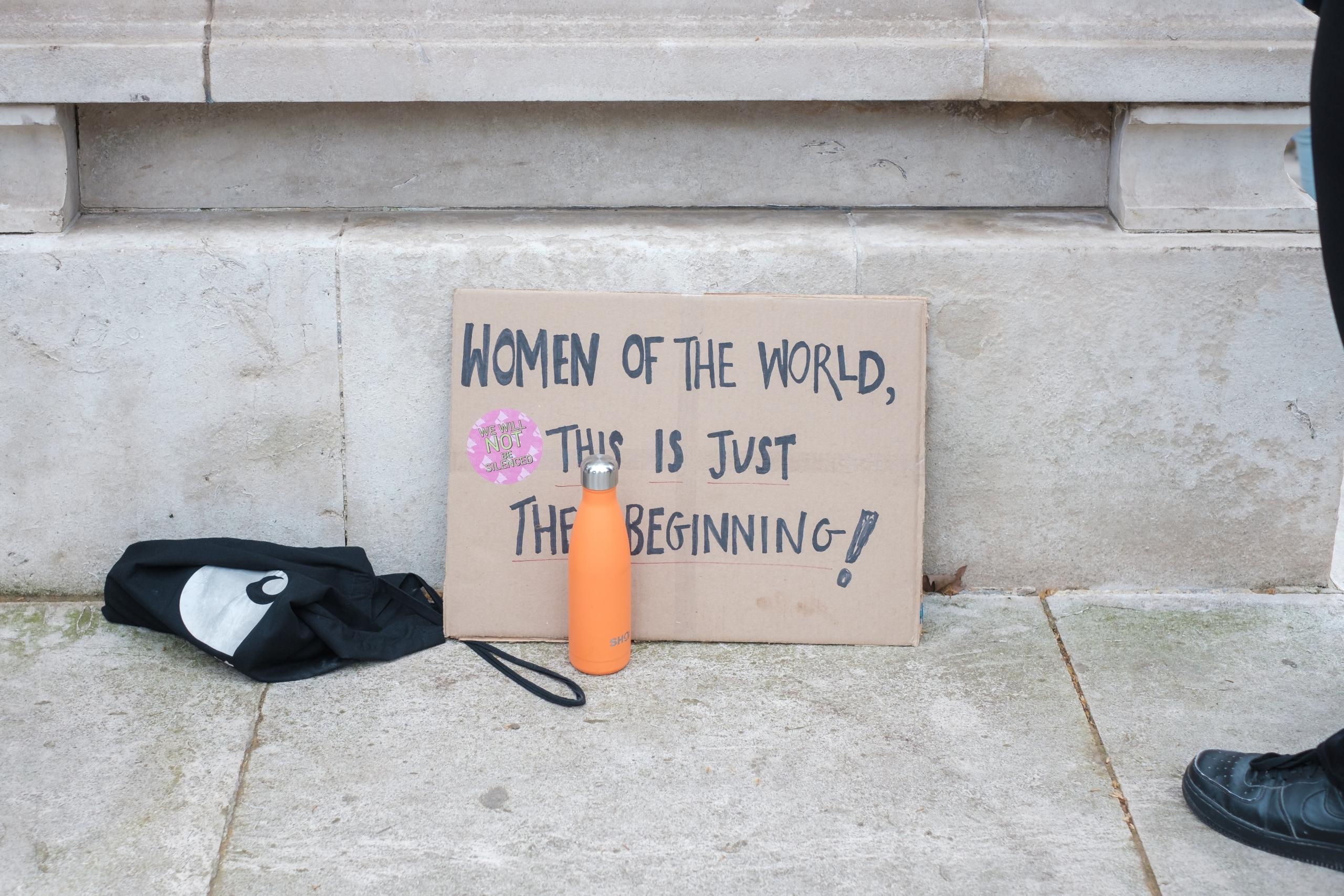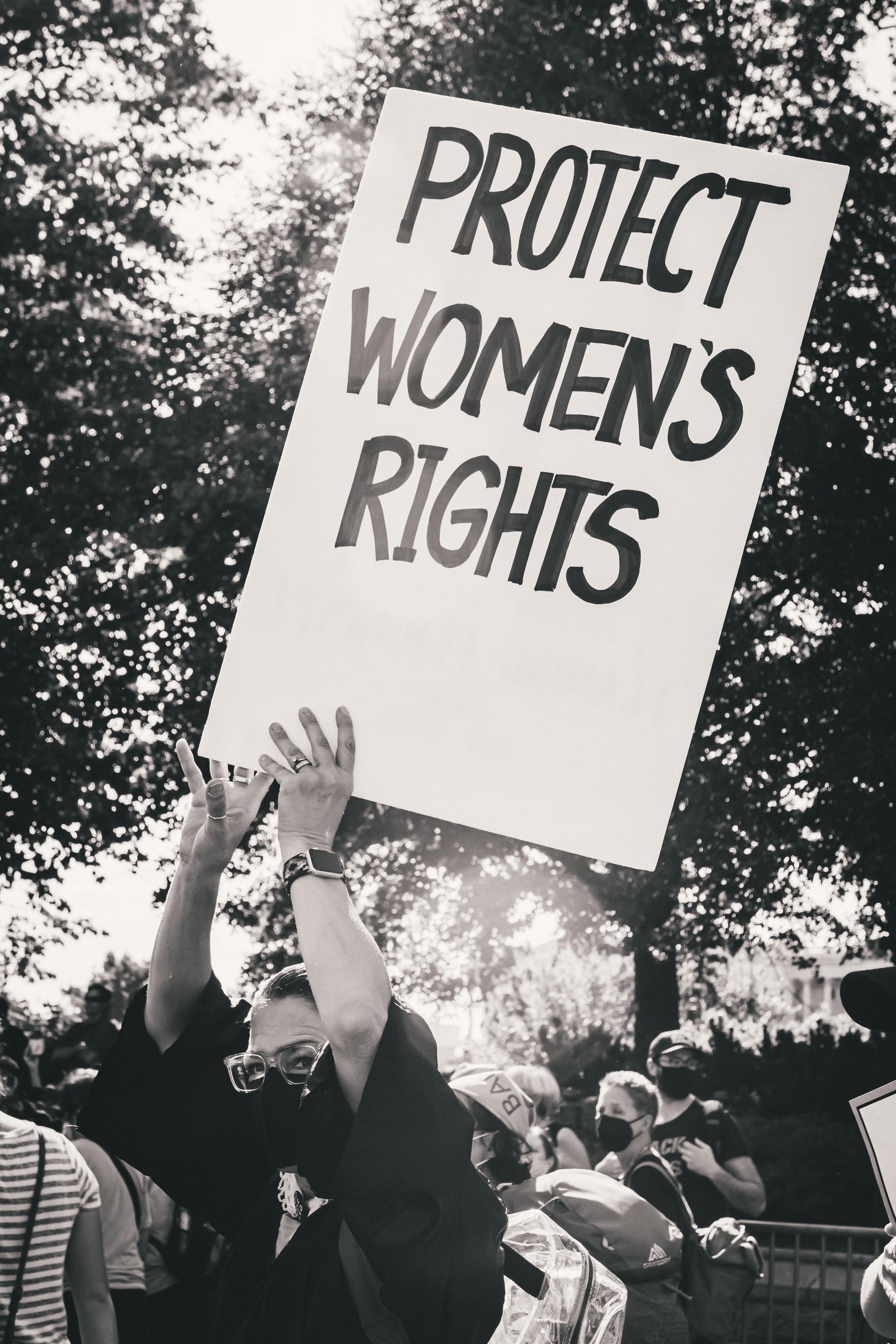This wave began in the early 1990s, right after the criticism and failures that were considered to have been part of second wave feminism. Third wave feminism was informed by post-colonial and post-modern thinking, also by the construction of a new or broader definition of feminity and a post-structuralist understanding of gender and sexuality outside the binary heterosexual scheme.

Cultural and political wave
The third wave had a great cultural influence in the United States through the emergence of the feminist punk subculture in Olympia, Washington with the riot grrrl in the 1990s. This group combined feminism, punk, music, and politics in their songs which are very explicit about rape, domestic abuse, sexuality, racism, patriarchy, classism, anarchism and female empowerment.
Furthermore, grrl-feminism tends to refuse to identify as 'feminists' because they found it limiting and exclusionary. Grrl-feminism was aimed at a global and multicultural feminist movement, that would break the boundaries between, identity, gender, social class and sexuality within the feminist movement.
In the political debate in the United States, Anita Hill, an American lawyer, accused Clarence Thomas, an African-American judge, of sexual harassment. Despite her accusations, Thomas became part of the United States Supreme Court. This arouses the question of wanting racial equality but without dismissing women.

Redefinition of feminism and feminist
The biggest challenge of the third wave was to not repeat the mistakes of the second wave, where exclusion and intersectional social problems were very much present in the feminist debate. The third wave was also a great reminder that women's rights should not be taken for granted. Because many people and women thought or argued that gender equality had already been achieved after the two first waves and that further debate and fight was unnecessary, or that it pushed women's rights too much in their favour.
Third wave feminism was all about creating and spreading awareness and consciousness, so much that third wave feminism encouraged women to define feminism for themselves.
This suggestion started thinking that feminism could change with every generation and individual. Because the second wave was considered to exclude minority and non-privileged groups, third wave feminism was focusing on including everyone to create an inclusive feminist movement across the intersectional challenges previously found in the feminist movement.

Issues addressed in third wave feminism
Although political rights and social stereotypes and gender roles had been discussed and advanced in the second wave, the third wave addressed the following topics with a stronger and more radical standpoint. It was also influenced by the postmodernist movement in the academy, which focused on redefining ideas.
Violence
For example, violence against women discussed topics such as rape, domestic violence and sexual harassment and became a central issue, put forward in the famous playwright The Vagina Monologues in 1996, generating exploration around women's feelings and debate around orgasm, birth, and rape. This accurately presented the spirit of the third wave, which was honest, raw, humorous and sometimes even horrific.
Sexual liberation
During the third wave of feminism, sexual liberation consisted in first being aware of how gender and sexual orientation had been shaped according to one's sex assigned at birth, to then be able to intentionally construct one's expression of gender and sexual identity. This was and remains a difficult subject and controversy surrounding what sexual liberation entails, however third wave feminists supported the idea that women should embrace their bodies and sexuality to take back their power.
Reproductive right
Although this theme started being discussed during the second wave of feminism, it remained a fight and battle to broaden access to contraception, abortion, and women's reproductive rights to all women, not only white middle-class women. Feminists hope to have access to contraception and abortion to decide the terms under which they wanted to bear children. Having control over their bodies in terms of reproduction was essential for full economic independence from men.
Language
Reclaiming derogatory terms like bitch, or slut, among others, became part of a reclamation strategy to give it another connotation and seize the meaning through walks, song (All Women Are Bitches) and books (Bitch: In Praise of Difficult Women).
Race
The fracture between Black feminism, Afro-American feminism and other minority ethnic groups were more active and fought to make their challenges as women in their specific ethnic group visible while integrating a specific movement of feminism whether it is liberal or radical.
Social class
Some feminist groups even made a parallel with the theory of capitalism to the intersectional and structural challenges they were facing in their everyday lives. In France, the Parti Socialist Féminin, which gathered socialist feminists adopted a Marxist version of matriarchy.
Third wavers' outlets
Third wavers inherited an institutional and political power from the first and second wavers, which help keep the moment of the movement and build awareness. Education did not play the same important role as it did during the second wave. However, women's studies and programs at several universities kept the discussion and analysis alive and allowed more women to be aware of the movement. Another significant outlet was the use of the internet to publish and read e-zines or blogs to express themselves but also get informed about the movement.
The internet forums further nurtured the debate and offered a place to exchange information between women and feminist groups. The culture of the internet radically democratized the content and debates of the feminist movement.

Critics and remaining challenges
Several critics said that the third wave was just an extension of the second wave, without achieving a specific goal in any of the topics women were fighting for. Despite all the efforts from the different feminist movements and currents, the movement showed its internal fissures and problems. This showed a general lack of cohesion within the movement, which made it very hard for the feminist movement to advance on many fronts.
While the first and second waves had specific demands and causes, the third wave was too broad and therefore did not show a specific goal.
This is where the term 'wave' was strongly criticized because it deliberately ignored progress that was made between the different periods of feminism. Regardless of the different protests, and growing awareness, this is not rightly recognized in the wave metaphor, thus reducing the efforts of the feminist movement. Another controversy was the fact that using girly accessories was not a representation of true sexual liberation, and it was rather considered as an old oppression in disguise. Several writers, from inside and outside the movement, argued that the new generations of women were not bringing anything substantial and new to the movement
The fourth wave
Third wave feminism is proof of the difficulty to tell the history of feminism and all the difficulties that girls and women experience around the world to find their place within the movement. However, this is what makes history and women so fascinating, that as many women there are many stories and backgrounds to be taught and defended. Regardless of the difficulties of the third wave, the wavers kept on surfing the next wave, which is known as the fourth wave.
The debate set the beginning of this wave of feminism around 2012 and its focus was turned towards sexual harassment, body-shaming and rape culture. These topics were mostly referring to the harassment that women were facing at work and girls at school, not only physically but also through the internet and social media platforms.
For many, this wave is a continuity of the Third wave but shows specific movements, such as the Me Too Movement which is internationally known and the Women's March which grew in demonstrations around the world, particularly in countries from Latin America. The history of feminism is rich and complex and deserves more attention and analysis. Nevertheless, the feminist movement is active beyond borders and each woman and group of women have the right to participate in the debate and add substance to it as it grows.















